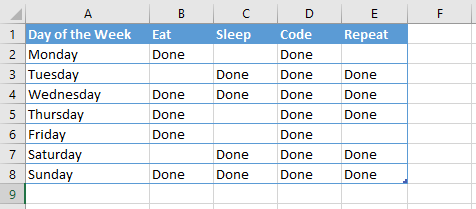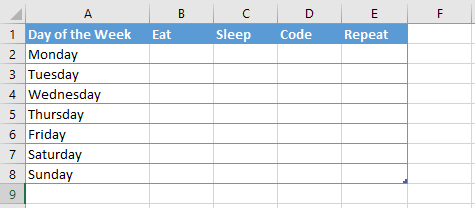Note
Access to this page requires authorization. You can try signing in or changing directories.
Access to this page requires authorization. You can try changing directories.
This will guide you how to use Microsoft PowerShell to clear cells in an Excel worksheet.
Loading the Excel file from your location :
#####################################################################
## Load Excel file
$ExcelPath = 'D:\MyInputFile.xlsx'
$Excel = New-Object -ComObject Excel.Application
$Excel.Visible = $false
$ExcelWorkBook = $Excel.Workbooks.Open($ExcelPath)
$ExcelWorkSheet = $Excel.WorkSheets.item('MySheetName')
Writing the clearing logic with the help of nested For loops for rows and columns :
#####################################################################
## Clear Logic
$RowMax = ($ExcelWorkSheet.UsedRange.Rows).count ## get the total count of used rows
for($i=2; $i -le $RowMax; $i++) ## skip the header
{
for($j=2;$j -le 12;$j++)
{
$ExcelWorkSheet.Cells.Item($i, $j).clear()
}
}
Saving and closing all connections to Excel :
#####################################################################
# Close connections to Excel
$Excel.DisplayAlerts = $false
$Excel.ScreenUpdating = $false
$Excel.Visible = $false
$Excel.UserControl = $false
$Excel.Interactive = $false ## set interactive to false so no save buttons are shown
$Excel.ActiveWorkbook.Save() ## save the workbook
$Excel.ActiveWorkbook.Close() ## quit the workbook
$Excel.Quit()
Clearing the object references is always a good idea. You can use the following snippet to do so :
#####################################################################
## Close all object references
Release-Ref($ExcelWorkSheet)
Release-Ref($ExcelWorkBook)
Release-Ref($Excel)
## Function to close all com objects
function Release-Ref ($ref)
{
([System.Runtime.InteropServices.Marshal]::ReleaseComObject([System.__ComObject]$ref) -gt 0)
[System.GC]::Collect()
[System.GC]::WaitForPendingFinalizers()
}
Sample Input :
Sample Output :
Complete Script can be downloaded here.

